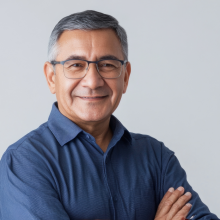
5.2 From pilots to large scale implementations

As many forest ecosystems are degraded, large-scale forest restoration is essential for meeting the global ambitions of improving biodiversity and ecosystem services a. Experience from smaller pilot projects can show clear evidence of success, which then supports efforts that lead to success at a regional or national level. Well executed pilot projects provide a conceptual framework where lessons learned – ranging from technical methods to stakeholder engagement – can be applied to addressing larger environmental challenges.
Within our work, we developed the concept of an upscaling ‘route-map’ to help those commissioning or running pilots to consider and advise on how the learning from their project should be upscaled (see Guidelines for the Development of Upscaling Plans)
Policy actors initiating or financing pilot projects
The first step is to define an overarching restoration goal. This means clearly stating why restoration is needed, what specific problems (like degraded land or reduced biodiversity) that a pilot project should address, and how the restoration goal aligns with broader environmental policies such as the EU Nature Restoration Regulation. A central and integrated part of a pilot project is then to develop a ‘route-map’ that translates the outcomes of the project into actionable steps for upscaling. Hence, any pilot project should be requested to consider upscaling from the start of the project through to its conclusion. Without this, the pilot project may not provide the necessary knowledge base needed for implementing restoration at scale. This is the main purpose of developing a route map, and will achieve its purpose by addressing five basic questions.
- 1. Why is large scale forest restoration needed? This should, besides the overarching restoration goal, clearly explain the underlying needs and motivation for restoration and identify synergies and conflicts with other potential restoration goals.
- 2. Who are the key actors for upscaling? Effective upscaling requires engaging diverse groups of actors and stakeholders. These are central for transferring the knowledge gained from the pilot project and include landowners, policy makers, forest value chain actors, civil society, and knowledge providers.
- 3. Where should restoration be prioritized? When addressing restoration at scale, new questions arise relating to landowners, jurisdiction, and ecological conditions that require spatial planning.
- 4. What are the key barriers to address? Barriers arise in several dimensions. A so-called ‘PESTEL’ analysis that explores issues across political, economic, social, technical, environmental and legal dimensions is a helpful approach.
- 5. What are the project recommendations for how to address the barriers to upscaling restoration? As a final output, the route map should provide guidance, advice and recommendations to those with the mandate and capacity to lead and implement restoration at scale.
In summary, using practical examples and frameworks derived from pilot projects helps establish a solid foundation for large-scale implementation. By defining objectives, involving key stakeholders, addressing barriers methodically, ensuring robust funding, and embracing continuous learning, a pilot project can successfully guide implementation of forest restoration on a large scale.
Related resources
Upscaling restoration of forests and forest landscapes in Sweden
This publication focuses on the Swedish Case Study within the EU Horizon SUPERB Project which is located in the Vindelälven-Juhttátahkka Biosphere Reserve. The project's focus is on restoration, which contributes to strengthening the ecological functionality of forests and forest landscapes, including biodiversity.
Upscaling Plan for the Scottish Demo Forest
The Scottish demo area, located in the Queen Elizabeth Forest Park, is a forest managed by Forest and Land Scotland. It primarily consists of non-native plantation forests and has evolved from focusing on timber production to multi-functional management that emphasises biodiversity, ecosystem services and recreational opportunities. This includes restoration of riparian zones, species diversity and measures to combat ecological pressures such as invasive species and deer browsing.




